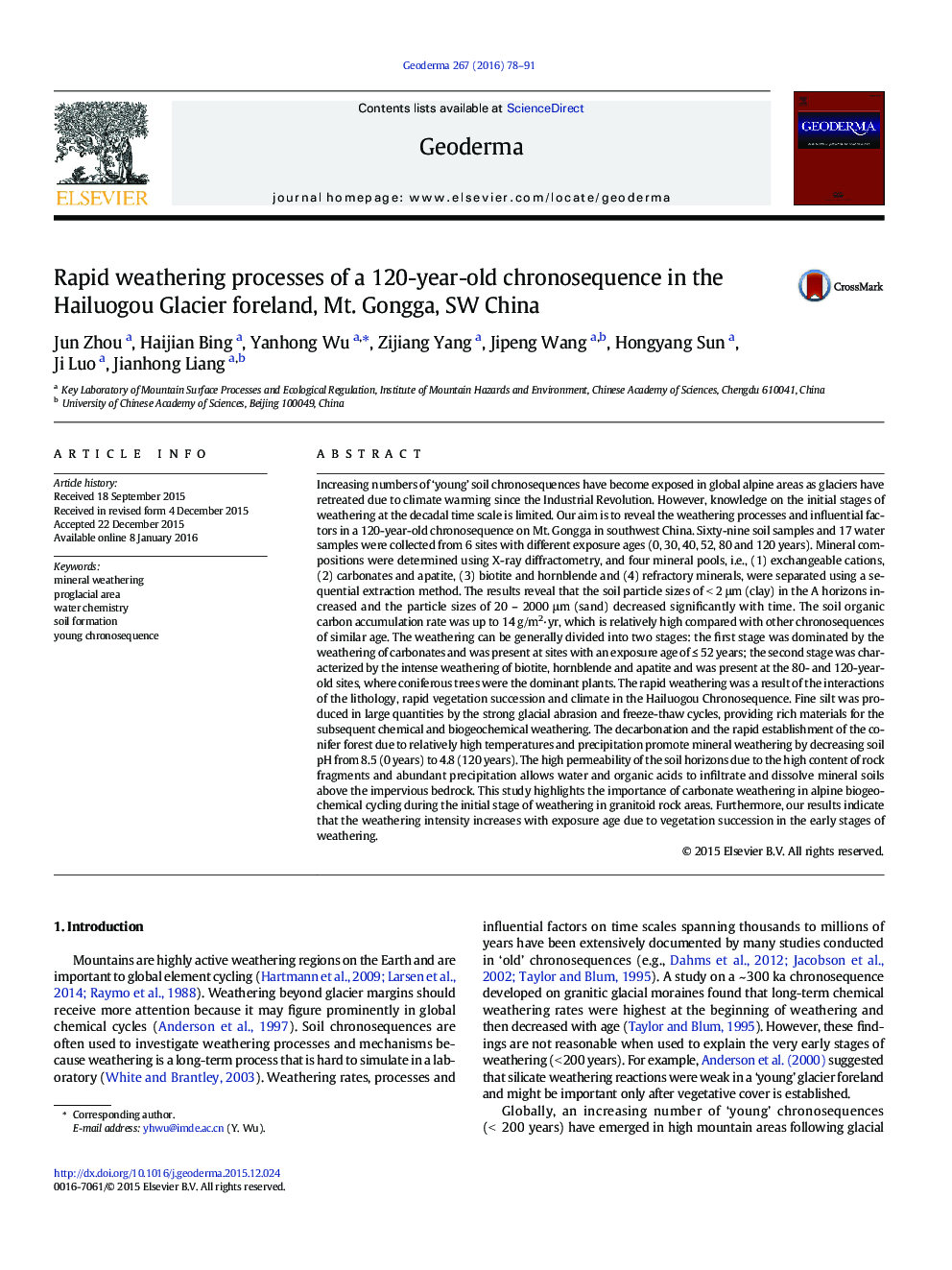| کد مقاله | کد نشریه | سال انتشار | مقاله انگلیسی | نسخه تمام متن |
|---|---|---|---|---|
| 6408377 | 1629450 | 2016 | 14 صفحه PDF | دانلود رایگان |

- Weathering was dominated by the carbonates depletion in the stages ⤠52 yrs.
- Biotite and hornblende were reduced largely in the weathering stages ⥠80 yrs.
- Rapid plant succession intensified weathering by decreasing soil pH sharply.
Increasing numbers of 'young' soil chronosequences have become exposed in global alpine areas as glaciers have retreated due to climate warming since the Industrial Revolution. However, knowledge on the initial stages of weathering at the decadal time scale is limited. Our aim is to reveal the weathering processes and influential factors in a 120-year-old chronosequence on Mt. Gongga in southwest China. Sixty-nine soil samples and 17 water samples were collected from 6 sites with different exposure ages (0, 30, 40, 52, 80 and 120 years). Mineral compositions were determined using X-ray diffractometry, and four mineral pools, i.e., (1) exchangeable cations, (2) carbonates and apatite, (3) biotite and hornblende and (4) refractory minerals, were separated using a sequential extraction method. The results reveal that the soil particle sizes of < 2 μm (clay) in the A horizons increased and the particle sizes of 20 - 2000 μm (sand) decreased significantly with time. The soil organic carbon accumulation rate was up to 14 g/m2·yr, which is relatively high compared with other chronosequences of similar age. The weathering can be generally divided into two stages: the first stage was dominated by the weathering of carbonates and was present at sites with an exposure age of ⤠52 years; the second stage was characterized by the intense weathering of biotite, hornblende and apatite and was present at the 80- and 120-year-old sites, where coniferous trees were the dominant plants. The rapid weathering was a result of the interactions of the lithology, rapid vegetation succession and climate in the Hailuogou Chronosequence. Fine silt was produced in large quantities by the strong glacial abrasion and freeze-thaw cycles, providing rich materials for the subsequent chemical and biogeochemical weathering. The decarbonation and the rapid establishment of the conifer forest due to relatively high temperatures and precipitation promote mineral weathering by decreasing soil pH from 8.5 (0 years) to 4.8 (120 years). The high permeability of the soil horizons due to the high content of rock fragments and abundant precipitation allows water and organic acids to infiltrate and dissolve mineral soils above the impervious bedrock. This study highlights the importance of carbonate weathering in alpine biogeochemical cycling during the initial stage of weathering in granitoid rock areas. Furthermore, our results indicate that the weathering intensity increases with exposure age due to vegetation succession in the early stages of weathering.
Journal: Geoderma - Volume 267, 1 April 2016, Pages 78-91